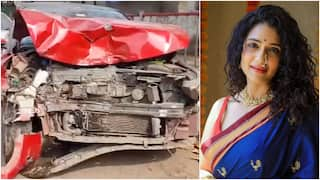Bangladeshi Man Gets New Lease Of Life After Wife Donates Part Of Liver, Undergoes Surgery At Faridabad Hospital
The hospital's doctors successfully performed the first Robotic living donor surgery to remove the liver graft in an eight-hour procedure.

A 58-year-old Bangladeshi businessman who had been suffering from liver cirrhosis for three years was given a fresh lease on life at Amrita Hospital in Faridabad. His wife stepped up as a living donor for him, donating a portion of her liver. The hospital's doctors successfully performed the first Robotic living donor surgery to remove the liver graft in an eight-hour procedure. The graft was implanted into the patient after a 12-hour procedure, according to a press statement issued by the hospital.
According to the statement, the patient had non-alcoholic steatohepatitis (NASH), which is an inflammation of the liver caused by an excess of fat cells (fatty liver disease). This, along with liver cirrhosis (severe scarring of the liver), has resulted in a fluid buildup in the patient's belly, a condition known as ascites.
A team of ten surgeons led by Dr. S Sudhindran, Head of Solid Organ Transplant and Hepatopancreatobiliary (HPB) Surgery at Amrita Hospital Faridabad, carried out the robotic transplant procedure.
Dr. S Sudhindran stated: "This was the first live donor transplant conducted at our hospital. The use of robotic surgery added a unique aspect to this milestone. In a liver transplant, surgeries for the donor and recipient need to be appropriately timed. In this case, the donor's liver was cut into right and left portions using the latest Da Vinci Xi robot. The right portion of the liver was removed and transplanted into the recipient to replace his non-functioning liver. The success of this surgery relied on a collaborative approach from a diverse team of specialists to achieve the best results and minimize complications."
“During the procedure, one surgeon operated the robot from a console located away from the patient, while another surgeon assisted from by the patient’s side. Though the surgical complexity remains like open surgery, the key difference with robotic surgery lies in the smaller, concealed scar in the lower abdomen, resembling a caesarean scar in females. The wound related problems like pain, chance of hernia in the long term is significantly lesser with the robotic technique. This technique is suitable for young donors who do not wish to have a big scar on their upper part of abdomen for the rest of their lives.” he further said.
Check out below Health Tools-
Calculate Your Body Mass Index ( BMI )
Trending News
Top Headlines






































